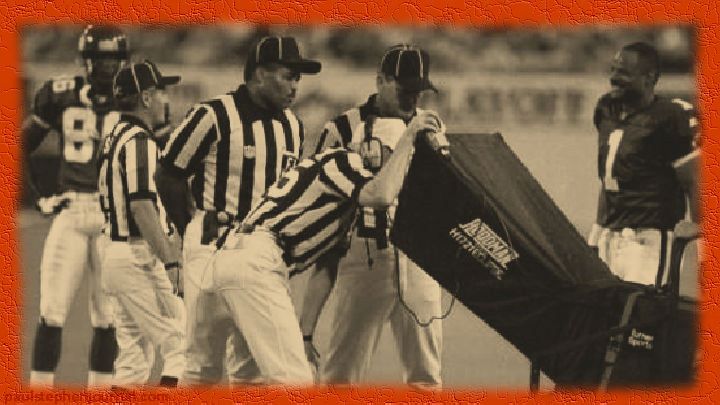I have meant for a while to discuss the matter of “social media” and in particular all of the said outlets that I have experimented with over the years. On the side of my blog’s website, there is a section linking to all of the social media accounts I currently have active.
First and foremost, I do not like social media. I am a firm believer in the “you are the product” school of thought regarding it all, no better than livestock virtually ranged within a business model fence. Their intent is to collect who you interact and associate with, to scan your behaviors and interests, all for the purposes of blackmail er…targeted marketing, and possibility more nefarious motives.
Reading and intaking what innumerable strangers say and post anonymously or pseudo-anonymously is not for the faint of heart. If you can acknowledge how difficult it is to meet and discourse in-person with perspectives and opinions that could be wildly different or even in opposition to your own, then multiple that by 1,000, you may begin to appreciate the confusion and futility that Internet social communication blanketed by anonymity generally is.
It is from my pessimistic prognosis of social media that I mostly avoid it. But why do I even bother at all? As a blogger, these platforms still represent opportunities to extend the reach of my writings and other postings, particularly my astrophotography. computerlookingup.com is home base. As small as it is in the grand Internet, it is my home. Just as a business advertises, so I go into virtual town to exhibit my products from time to time. If I am not writing a new article or taking even more pictures of the Moon through my telescopes, I am very likely not posting to social media.
I still plan to write eventually about all of my failed social media outlet experiences, but for today, let’s review what I have now, those active and linked to my blog. First and as a default is my X/Twitter account, for all the good it does. When I talk about the failed accounts, I will re-mention the criteria by which I tried to leverage all social media, with passive posting, and neither going on mad hunts for followers by superficially interacting with others, nor “following” them in hopes they would follow me back. If someone does follow me, and if they appear to post content with interests aligned with my blog, I do follow them back. Needless to say, when it comes to X, my posts are barely viewed and acknowledged.
LinkedIn is the “professional” social media locale. Owned by Microsoft, I am probably be even more suspicious of it than average. I rarely post there, unless I feel a particular content from my blog makes sense on LinkedIn. For what it’s worth, LinkedIn is tolerable if only because of its default professional network.
medium.com is a writer’s site. Like LinkedIn, I only post select articles there, when I feel they fit with that outlet. medium.com is filled with a lot of self-help articles for which it would have been interesting to get Mark Twain’s take on. Regardless, my articles on medium.com get a decent amount of traffic, especially compared to the non-existent volume of X.
And then there is Gab, the self-proclaimed free speech sanctuary very separate and apart from the global tech titans aligned in their philosophies, anathema to Gab’s. When I first created a Gab account, I did not expect it to be much better than the rest. But from this small blogger’s vantage, it is the David that thoroughly trounces the Goliath of X, if I am to believe the interactions and view counts. My statistics are still small potatoes for social media, but I safely get, on average, several hundred views from Gab posts where I am lucky to get a dozen views from the equivalent on X. And it is worth noting that for X, a fair amount of time I am having to report inappropriate accounts that are clearly bots . Are the thousands of Gab views due to bots as well? If they are, they do a pretty good job of hiding that fact.
Gab is what prompted this article. Today being the first of March, a new debated policy went into effect, where “free” accounts can no longer post media to Gab. In full disclosure, I did convert my Gab account to a Pro account during last year’s Black Friday sale. Given what appeared to be the positive receptions my Gab posts were getting apart from the other social media sites, I decided to take a prudent risk and acquire lifetime Pro status for a few hundred dollars. If it does not work out, it is a paid lesson learned.
Free Gab accounts can still post text all they want, just not pictures and videos, which of course take up a lot of space. I will not pretend to understand the bigger picture of why Gab did this, beyond saying it seems a reasonable cost decision which still allows anyone to “say” what they want on the platform. I know from my own personal blogging and astrophotography hobby that text takes up next to no storage, images sizes can vary widely, and video takes up an exponentially larger amount of storage. I cannot image the costs associated with all of that on an enterprise worldwide scale.
Free speech has never been truly free, either before or after the First Amendment to the United States Constitution was ratified. To have speech is to also imply having listening, and while you may control what you say, you cannot control how others will react to what you say. The “cost” of “free” speech is upon how others will behave and interact towards you afterwards, based on what you said.
Free speech also has a much more mundane cost in resources. Everyone cannot say whatever they want and whenever they want. Space must be created and assigned, and someone needs to pay for that space. Time is the most precious of all resources, and the public square can only function with reasonable allocations given to each speaker.
I try to review classical American tenants like Freedom of Speech through colonial America, when ideas bestowed from Western Civilization were seized and nurtured into the versions most of us know of today. Benjamin Franklin’s experiences are a rich source on these matters.
And it being found inconvenient to assemble in the open air, subject to its inclemencies, the building of a house to meet in was no sooner propos’d, and persons appointed to receive contributions, but sufficient sums were soon receiv’d to procure the ground and erect the building, which was one hundred feet long and seventy broad, about the size of Westminster Hall;[ 80] and the work was carried on with such spirit as to be finished in a much shorter time than could have been expected. Both house and ground were vested in trustees, expressly for the use of any preacher of any religious persuasion who might desire to say something to the people at Philadelphia; the design in building not being to accommodate any particular sect, but the inhabitants in general; so that even if the Mufti of Constantinople were to send a missionary to preach Mohammedanism to us, he would find a pulpit at his service.
Autobiography of Benjamin Franklin
Colonial Philadelphia built an assembly hall which could be used by any sect of religious preacher. I do not know the particulars of the funding and contributions, but here is an example of the citizenry allocating space and materials as a worldly solution in the service of assembly, speech, and differing religious beliefs. This is an amazing if forgotten example of ideals that would eventually be embodied within the First Amendment.
One could gleam further implications to the arrangement. While the “Mufti of Constantinople” would be welcome to preach at the venue, there were likely rules even he would have had to abide by, just like any minister. One single preacher could not monopolize the physical building, or alter the assembly or permanently add to it in any manner. Freedom of Speech has always been about ensuring the existence of that assembly structure, which itself has always had limits to its capacity and schedule.
Within the contemporary paradigm of social media, the assembly halls are the platforms themselves. The rules for those halls are set by their owners, and every user will never 100% agree with the policies set forth to manage those platforms, yet still must abide by them as requirement for participation. And there is no guarantee the policies of today will be the same tomorrow, unless through a lawful contract, which is never the case for social media “terms of service” agreements.
One final thought for now on Speech Freedom, which has already been alluded to. I believe it is far more important for Free Men to be able to listen about and understand the most pertinent of matters, than it is to ensure everyone can have a say. In the context of social media and media in general, I would far rather watch, listen, and read debate and discourse by genuine, sincere champions of particular positions, than to attempt ingestion of every possibly voice on a matter. This approach will never be perfect, but it is still important to try. As one clearcut example, debates in the form of Lincoln-Douglass would have immersible value in a Free Society over the goofy gotcha-nonsense that presidential “debates” have been for most of my life, especially recently. Let the combatants spare, and the let the crowd determine who was the intellectual victor. For Freedom of Speech is equally and maybe more so about the freedom to make up one’s mind from rationale persuasion.
Thank you for taking the time to read my article.








